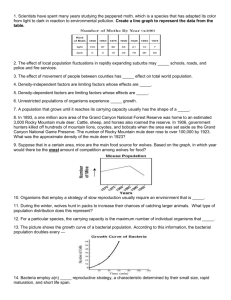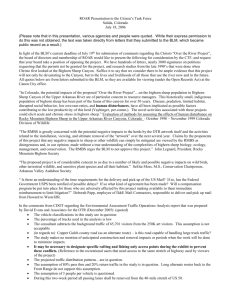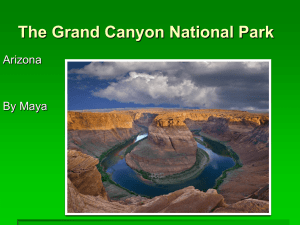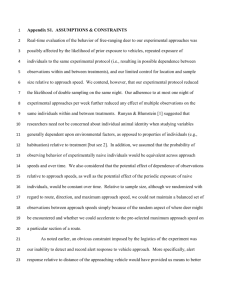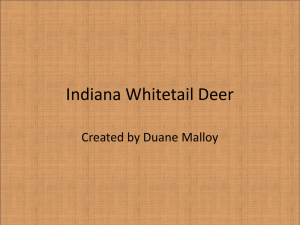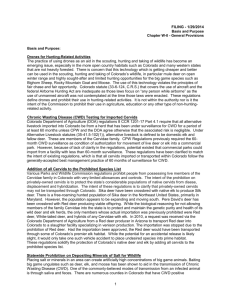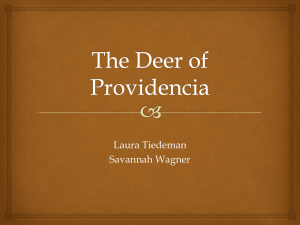2.1 MB - Electronic Field Trip
advertisement
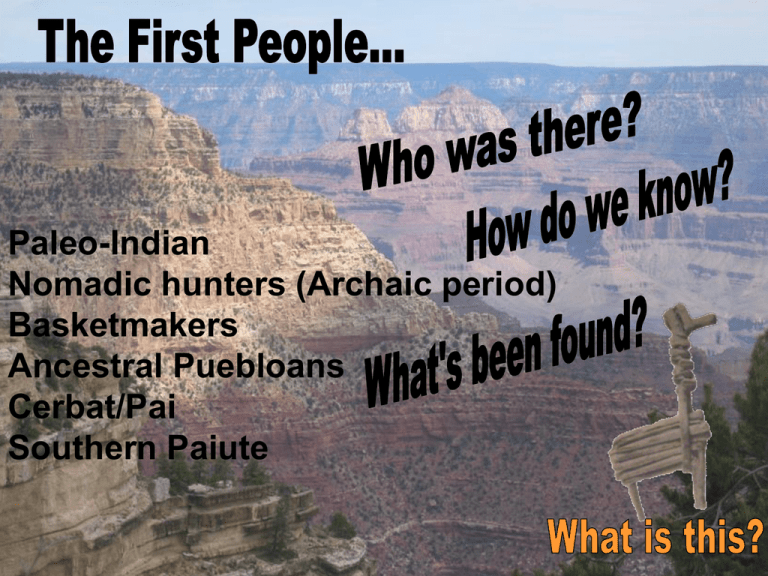
Paleo-Indian Nomadic hunters (Archaic period) Basketmakers Ancestral Puebloans Cerbat/Pai Southern Paiute Tiny animals made of willow twigs were left in caves high in the walls of the Grand Canyon. Some figures are plump, others are thin. Some are as big as eight inches in length; others as small as one inch! Some have tiny horns on their heads. The archeologists who have studied these animal figures, called "split-twig figurines", believe that they were made by members of an ancient people called the Desert Culture. The first known humans were in the Grand Canyon 10,000 years ago. In 1932 the first split twig figurines were found and dated to be 4.000 years old. They were preserved in the redwall caves of the Grand Canyon and were part of the Archaic culture. Some of the artifacts look like bighorn sheep and some look mule deer, both animals still very common in the Grand Canyon today. The desert Bighorn sheep inhabit the Sierra Nevada Mountain, California and south Mexico. Bighorn sheep live on grassy mountains, alpine meadows and foothill country near rocky cliffs that allow quick escape. Today Bighorn sheep are extinct from many states where they originally lived. This deer is 4 to 6-1/2 feet in length and 3 to 3-1/2 feet high at the shoulder. Mule Deer are named for their large, 9 inches long, mule-like ears that keep deer alert for signs of danger While the Mule Deer occupies almost all types of habitat within its range, it seems to prefer arid, open areas and rocky hillsides. Mule Deer do not run as other deer, but have a peculiar and distinctive bounding leap over distances up to 8 yards, with all 4 feet coming down together. In this fashion, they can reach a speed of 45 m.p.h. for short periods. Anthropologists suspect that these figures were made as part of a ritual ceremony that was carried out before a hunt, to ask for the blessings of the animal's spirits before taking their lives. Sometimes the finished shape was pierced with another piece of wood symbolizing that the animal had been struck by a spear or arrow, and killed. When the shapes were finished a torch made of juniper was lit, as part of the ceremony, and the shapes were placed beneath a rock marker in the back of a cave. The figurines were constructed by splitting willow twigs, using a stone blade, almost to the base of the twig. The two halves of the split twig were then wrapped and twisted around each other to construct the necessary shape. As more figurines are found they are studied and placed in the museum at the Grand Canyon and the Native American cultures and traditions live on… Learn how to create your own split twig figurine!! What does your figurine represent? Who are you? Why was it made? (hunting expedition or religious ritual) Where will you place your figurine?
